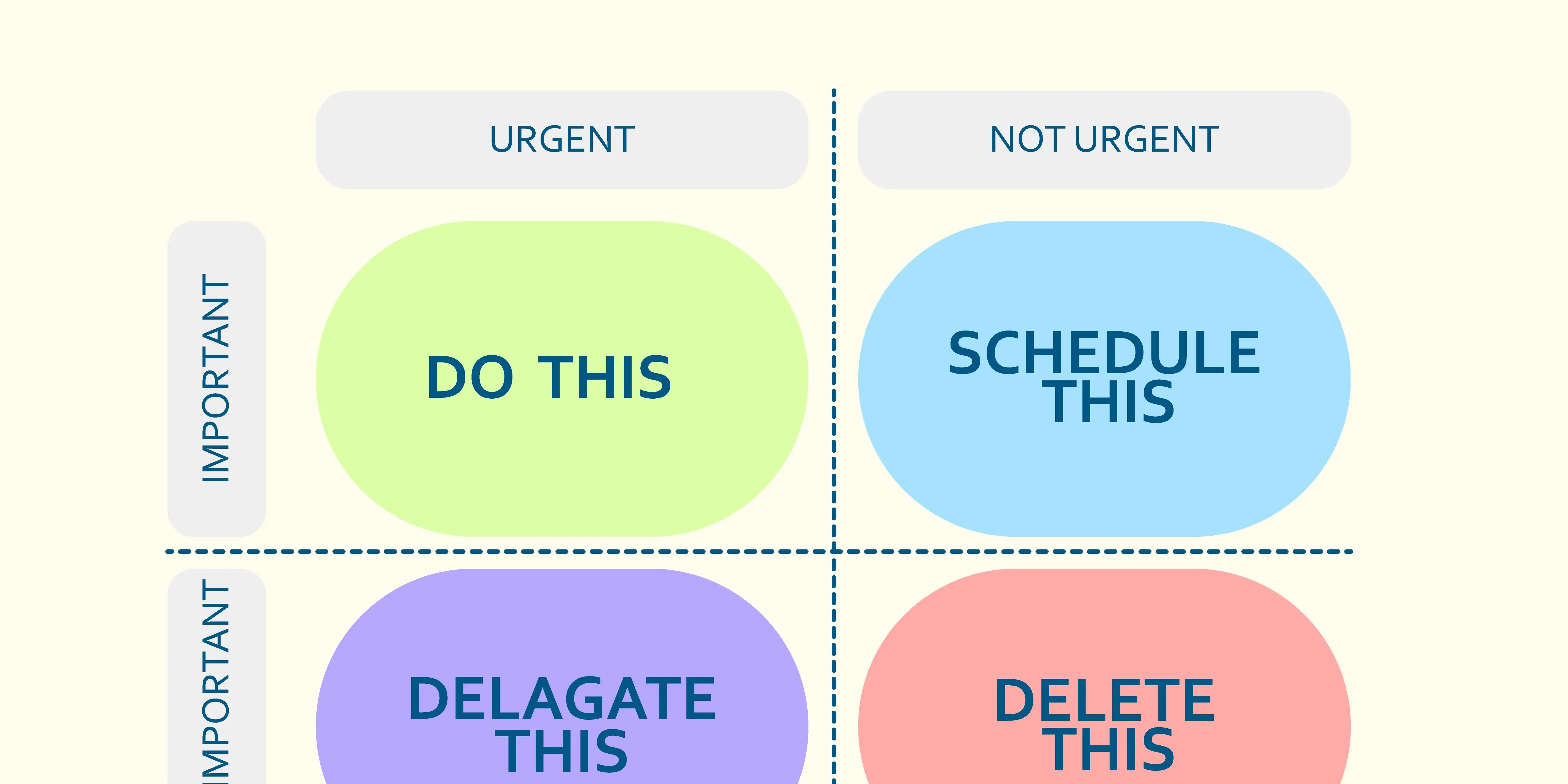Part-Time Job, Full-Time Student: Time Management Hacks to Do It All
Distractions are everywhere. Whether it's constant notifications, endless meetings, or that irresistible urge to check your social media, staying productive can feel like an uphill battle. But here's the deal: you don't have to succumb to constant overwhelm. This blog post is all about empowering you with actionable time management techniques to sharpen focus, slay procrastination, and ultimately enhance your productivity.
Drawing from a blend of expert advice and real-life applications, we will dive deep into strategies that can transform your daily routine. Whether you're aiming to streamline your workflow or finally tackle that daunting to-do list, there's a method here for you. Your journey towards more efficient time management starts now.
Harnessing the Power of Prioritization
Prioritization is key when trying to improve productivity. Start by identifying your most important tasks. Try using the Eisenhower Matrix to categorize tasks based on urgency and importance. Focus on what truly matters and delegate or eliminate the rest. An example? Consider a busy professional who prioritizes client meetings and vital projects over less critical activities, leading to better outcomes and more spare time.
According to productivity expert Stephen Covey, "The key is not to prioritize what's on your schedule, but to schedule your priorities." Figure out your top priorities and plan them into your daily schedule.
Effective Task Scheduling
Scheduling tasks effectively can turn chaos into clarity. Tools like Google Calendar or Trello can help you visualize your day and allocate time blocks for focused work. Implement time blocks of 25-30 minutes using the Pomodoro Technique, which enhances focus and provides breaks to minimize burnout.
Consider a university student balancing classes, work, and extracurriculars. By plotting out their week in advance, they identify the prime time for studying, resulting in enhanced academic performance. A study by the University of California found that students who scheduled regular study intervals performed better.
Smart Goal Setting with SMART Criteria
SMART goals—Specific, Measurable, Achievable, Relevant, and Time-bound—guide you in mapping out actionable plans. Break larger goals into smaller steps to maintain motivation and track progress effectively.
For instance, a freelance designer aiming to complete a portfolio might set specific weekly targets for each section. This not only simplifies the process but also provides a clear vision of success. The SMART framework is widely endorsed by business leaders for its practical application and effectiveness.
Eliminating Time Wasters
Identifying and eliminating time wasters is crucial. Habitual distractions, such as excessive social media browsing or unplanned interruptions, can drain valuable time. Set boundaries by scheduling specific time slots for leisure activities or finding a quiet workspace.
Consider an entrepreneur who dedicates quiet hours solely to strategic planning, thereby reducing workplace distractions and fostering innovation. The American Psychological Association suggests that reducing interruptions can increase productivity by up to 40%.
Leveraging Technology for Time Management
Technology, when used judiciously, can be a productivity booster. Apps like Time Doctor or RescueTime help track and analyze how you spend your hours, offering insights to optimize your schedule.
An executive trying to enhance performance might use an app to identify time spent on non-essential tasks, redirecting focus to core responsibilities, thus boosting productivity. As tech journalist David Pogue puts it, "Embrace technology to get a grip on your time, not be gripped by it."
Streamlining Workflow with Automation
Automation tools can handle repetitive tasks and free you up for high-priority work. Applications such as Zapier connect workflows and execute routine actions without manual intervention.
For instance, a content manager automates email marketing and social updates, swiftly directing attention to creating quality content. A 2019 study by McKinsey revealed that automation could enhance efficiency by up to 30%, emphasizing its impact on productivity.
Mastering Delegation for Better Output
Delegation means assigning tasks to those who are better suited or have more bandwidth. By equipping team members with ownership, you not only enhance productivity but boost morale.
Take the case of a project manager who delegates technical aspects to team specialists, focusing their energy on leadership tasks. Delegation is a hallmark of successful leadership, as highlighted by renowned management expert Peter Drucker.
Incorporating Buffer Time
Spare yourself buffer time between tasks for a smoother transition. This prevents burnout and allows mental recuperation. Schedule short breaks or meditate briefly to reenergize before diving into the next task.
A teacher, for example, might use buffer time between classes to recharge, leading to vibrant lesson delivery. Research from the Journal of Applied Psychology indicates that breaks can significantly improve productivity and cognitive performance.
Developing Mindfulness and Focus
Mindfulness practices such as meditation or deep breathing exercises can enhance focus and reduce stress, cultivating a present and engaged mindset. Set aside specific times for mindfulness to maintain a balanced perspective.
An example could be an engineer incorporating five-minute morning meditations, finding improved concentration levels throughout the day. Numerous studies—including one published in Perspectives on Psychological Science—underscore mindfulness' ability to boost workplace performance.
Fostering a Healthy Work Environment
Finally, ensure your workspace is conducive to productivity. A decluttered environment, alongside ergonomic furnishings, can foster better concentration and enhance mood.
Imagine a writer who personalizes their office with preferred plants and art, creating a serene environment that sparks creativity. As Terrapin Bright Green's study reports, biophilic design in offices increases task performance and well-being.
Conclusion
By implementing these varied techniques, you'll witness a remarkable shift in your productivity levels, efficiency, and overall satisfaction. Remember that the key to productivity lies in consistently applying the best-suited strategies fit for your unique schedule. For those looking to take it a step further, try the comprehensive productivity tools.
#TimeManagement #BoostYourProductivity #EfficiencyHacks #WorkSmarter #PrioritizationTips
You May Also Like
These Related Stories

Proven Strategies to Master Your Time and Boost Efficiency

Master Time Management: Proven Strategies to Boost Output

No Comments Yet
Let us know what you think